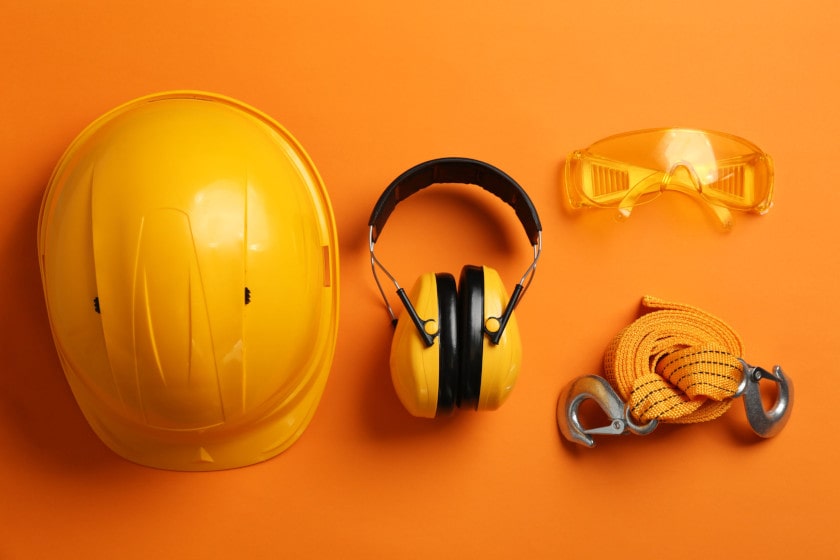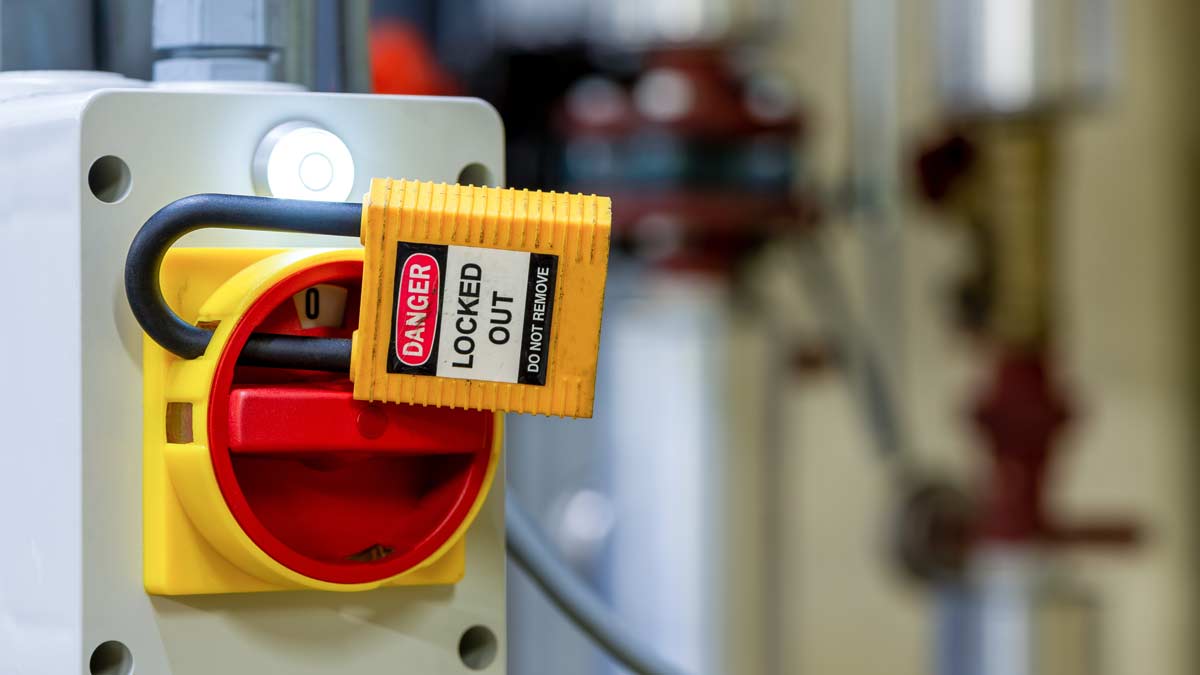Jobs can be dangerous; add heavy machinery, hazardous chemicals, or climbing to tall heights and you have a chance for serious injury while on the clock. Which is why safety should always be employers first priority in the workplace. In fact, federal law requires that businesses provide a safe working environment for their employees. The Occupational Safety and Health Administration, known as OSHA is the government agency that oversees workplace safety. Established by Congress in 1970, OSHA works to ensure that businesses are adhering to the safety standards created by the federal government.
What is an OSHA violation?
When a business does not comply with an OSHA regulation it is known as a ‘violation’. Violations range from minor infractions to major problems that could cause serious consequences such as injury or even death. A minor infraction may not warrant a citation, and a simple verbal warning will suffice, whereas a serious or repeated violation could cost employers a hefty fine.
There are six types of OSHA violations:
- De minimis
- Other-than-serious
- Failure to abate
- Serious
- Willful
- Repeated
OSHA ensures that businesses are complying with federal safety regulations through inspections. OSHA inspectors assess worksites looking for any safety risks. If a violation is noted, OSHA may issue a citation and depending on the severity of the situation, a fine. A violation in the 'serious' category could cost up to $13,653, while repeating a serious infringement multiple times could cost a business up to $136,532. See the full list of OSHA penalties here.
Avoid these costly fines by taking workplace safety seriously. On-the-job injuries can and do happen at any workplace, even if you work at an office lined wall to wall with plush carpeting with no heavy equipment or ladders in sight. Injuries can happen at your office, so be prepared.
Prevent OSHA’s Top 10 Violations at Your Workplace
Each year, OSHA publishes a list of its most frequently cited violations. Use the 2021 list as a guide to help prevent similar violations in the upcoming year.
OSHA violation #1: Fall protection
For the 11th year in a row, falls once again top the list in 2021. Falls are the leading cause of serious injury and even death at work. To prevent dangerous falls at your place of work, make sure to:
- Keep floors clear of debris and clutter.
- Ensure that floors are kept clean and dry. If floors have been recently mopped, make sure to block off the area with a highly visible safety and hazard communication barrier.
- Properly guard holes, spills or other dangerous areas with safety barriers that clearly communicate to others that the area is dangerous and should be avoided.
OSHA violation #2: Respiratory Protection
Millions of workers are required to wear respirators in various workplaces. Respirators protect workers against insufficient oxygen environments, harmful dusts, fogs, smokes, mists, gasses, vapors, and sprays. These hazards may cause cancer, lung impairment, diseases, or death. Prevent respiratory issues in the workplace by:
- Provide an appropriate respirator to employees when there is a risk of breathing in a hazardous airborne contaminant.
- Ensure the appropriate use of respirators by properly training employees.
- Institute a respiratory protection program that complies with OSHA standards.
OSHA violation #3: Ladders
OSHA inspectors cited nearly 3,000 violations for ladders in 2021. With various ladders in the workplace it is vital that businesses know the standards to keep employees safe when they climb. For example:
- Ladders must be able to support at least the maximum intended load.
- Ladders should not be used on slippery or unstable surfaces.
- Rungs should have skid-resistant material on them to minimize slipping.
- Ladder rungs, cleats, or steps should be parallel, level, and uniformly spaced.
- Additional safety measures, like self-retracting lifelines, cages, or safety barriers, should be used for higher climbs.
- Provide safety equipment such as helmets or harnesses when necessary.
OSHA violation #4: Scaffolding
OSHA estimates 65% of the construction industry use scaffolds regularly. To prevent violations and minimize tragic scaffolding accidents use OSHA’s Scaffolding eTool and make sure to:
- Ensure scaffolding platforms can hold the necessary weight to prevent overloading
- Scaffolds must be cleared of all clutter, debris and materials that could impose a tripping hazard.
- Scaffolds should include guardrails and cross bracing.
- Make sure that scaffolds are far enough away from power lines to prevent electrocution.
- Communicate clearly to other employees and those walking by to stay clear of the scaffolding area.
OSHA violation #5: Hazard Communication
An informed employee is a safe employee. At a minimum, companies must inform their employees about the identities and hazards of chemicals in the workplace. All employers with hazardous chemicals in their workplaces must:
- Provide labels and safety data sheets for all exposed workers.
- Train workers to handle chemicals appropriately.
- Inform and train workers on how to read and understand label elements and safety data sheets.
- Communicate about hazards easily and quickly to keep workers safe, informed, and connected.
OSHA violation #6: Lockout/Tagout
For industries that use heavy equipment and machinery there is a certain amount of risk faced daily. For example, if not properly shut off, dangerous machines could start up again during repair or maintenance. The lockout-tagout is a safety procedure which industries use to prevent machines turning on when not in use. With lockout-tagout, hazardous energy sources are turned off and rendered inoperative. The isolated power sources are then locked and a tag is placed on the lock identifying the worker who placed it. Prevent lockout-tagout citations by:
- Properly locking out and tagging out all equipment required by OSHA.
- Train each worker to know, understand, and follow the lockout/tagout procedures.
- Ensure all employees who work in an area where energy control procedures are required be instructed on the purpose and use of lockout/tagout.
- Train all maintenance workers on how to recognize the applicable hazardous energy.
- Retrain employees regularly to maintain proficiency or introduce new or changed methods.
- Separate the machine area with a retractable safety barrier while the machine is in use or turned on so that other workers and the maintenance crew know the machine has NOT been locked and tagged out.
OSHA violation #7: Fall Training Protection
Falls have topped the OSHA list for over a decade, so fall protection is an important area for employers as they seek to protect their workforce. Fall protection training is actually a separate OSHA guideline. Ensure your workers are safe by adhering to the following guidelines;
- Provide a training program for each employee who might be exposed to fall hazards.
- Make sure your employees are trained to recognize the hazards of falling and how to minimize these hazards.
- Communicate with employees about necessary safety training.
OSHA violation #8: Personal Protective and Lifestyle Equipment - Eye and Face Protection
OSHA reports that eye injuries cost businesses more than $300 million per year in lost production time, medical expenses, and worker compensation. Preventing blindness and other eye injuries is the goal of OSHA’s eye and face protection standards. These standards address personal protection, with special subparts for welding, cutting, and brazing, and other areas. Keep your workers safe by:
- Provide eye and face protection whenever necessary to protect against chemical, environmental, radiological, or mechanical irritants and hazards.
- Choose the correct eye and/or face protection appropriate for the job.
- Communicate to employees by using a safety barrier that an area may be dangerous to enter without the proper safety equipment.
OSHA violation #9: Powered Industrial Trucks
If your business operates or uses forklifts or lift trucks to move materials, OSHA has a lengthy list of standards for these potentially dangerous vehicles, including general requirements relating to fire protection, design, and maintenance. Prevent OSHA citations by:
- Do not allow an employee to operate a forklift unless they have been trained and licensed.
- Use seatbelts, if available.
- Report any damage or problems that occur to a forklift during a shift.
- Use extreme caution while driving on grades or ramps.
- Do not handle loads that are heavier than the weight capacity of the forklift.
- Operate forklifts at a speed that will permit it to be stopped safely.
- Slow down and sound the horn at cross aisles and other locations where vision is obstructed.
OSHA violation #10: Machine Guarding
Moving machine parts have the potential to cause severe workplace injuries, such as crushed fingers or hands, amputations, burns, or blindness. When a machine is in operation, safeguards are essential for protecting workers from these preventable injuries. To help protect workers and curb injuries, OSHA publishes resources on possible solutions for machine guarding hazards, including safe techniques, best practices, and virtual tours of select machines. To prevent machine related injuries:
- Use properly guarded saws and appropriate safety equipment.
- Avoid wearing loose-fitting clothes and long hair that might become entangled in a power tool and remove rings, watches, neck chains and other jewelry.
- Follow the proper lockout/tagout procedure for the machine you are using.
- Wear safety equipment, such as gloves and protective eyewear.
- Use a safety barrier to block off the machine area and customize the message to let others know that the machine could be dangerous or that safety precautions are needed.
Each of OSHA’s top ten most frequently cited violations are avoidable if one takes the proper precautions. Remember, employers are legally and ethically responsible to provide safe working conditions for their employees so it is imperative you do your part to ensure workers are safe.
By following OSHA’s guidelines and conducting regular safety audits at your workplace, you can be certain you are doing all you can for your worker's safety and the overall safety of your facility.

